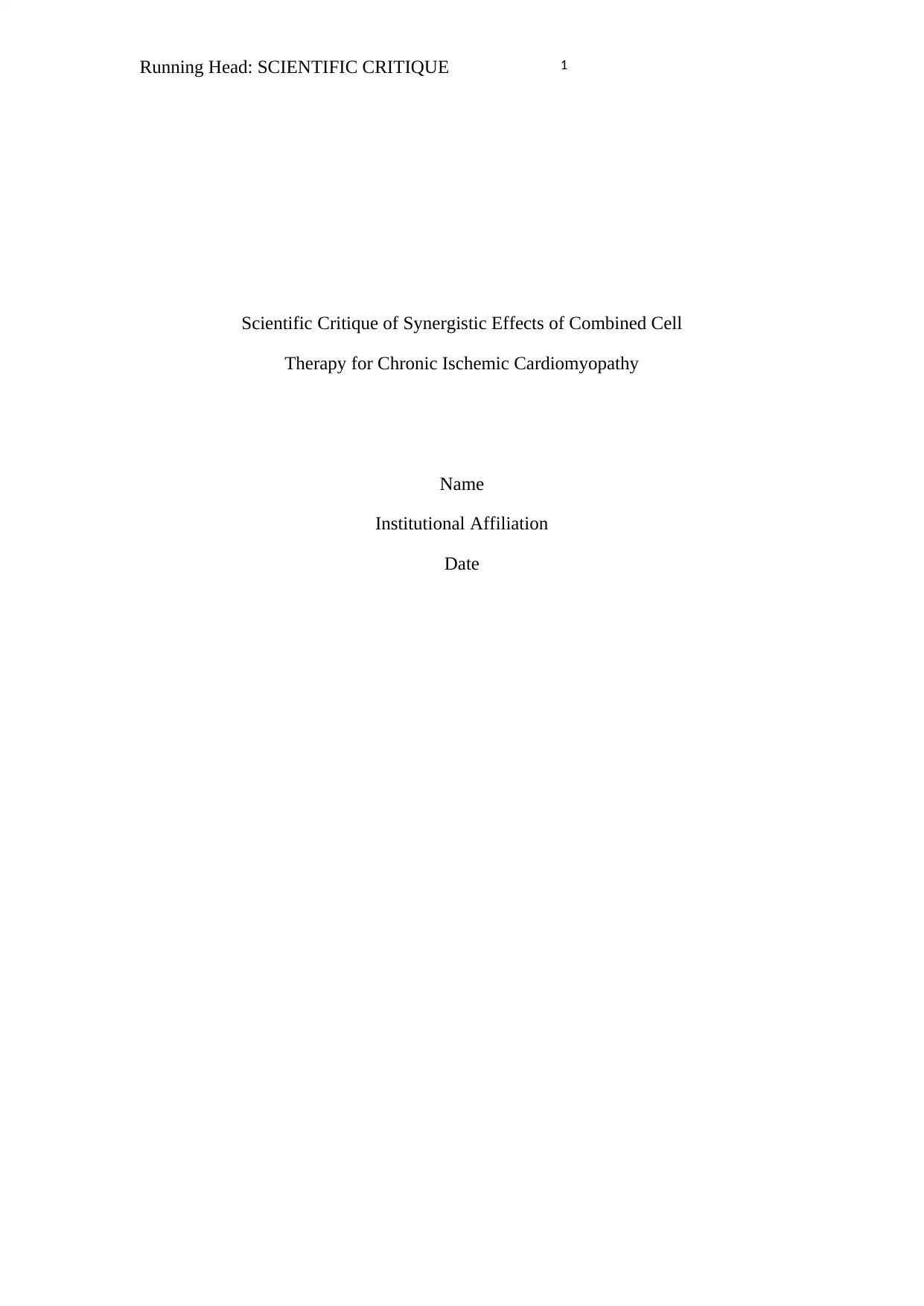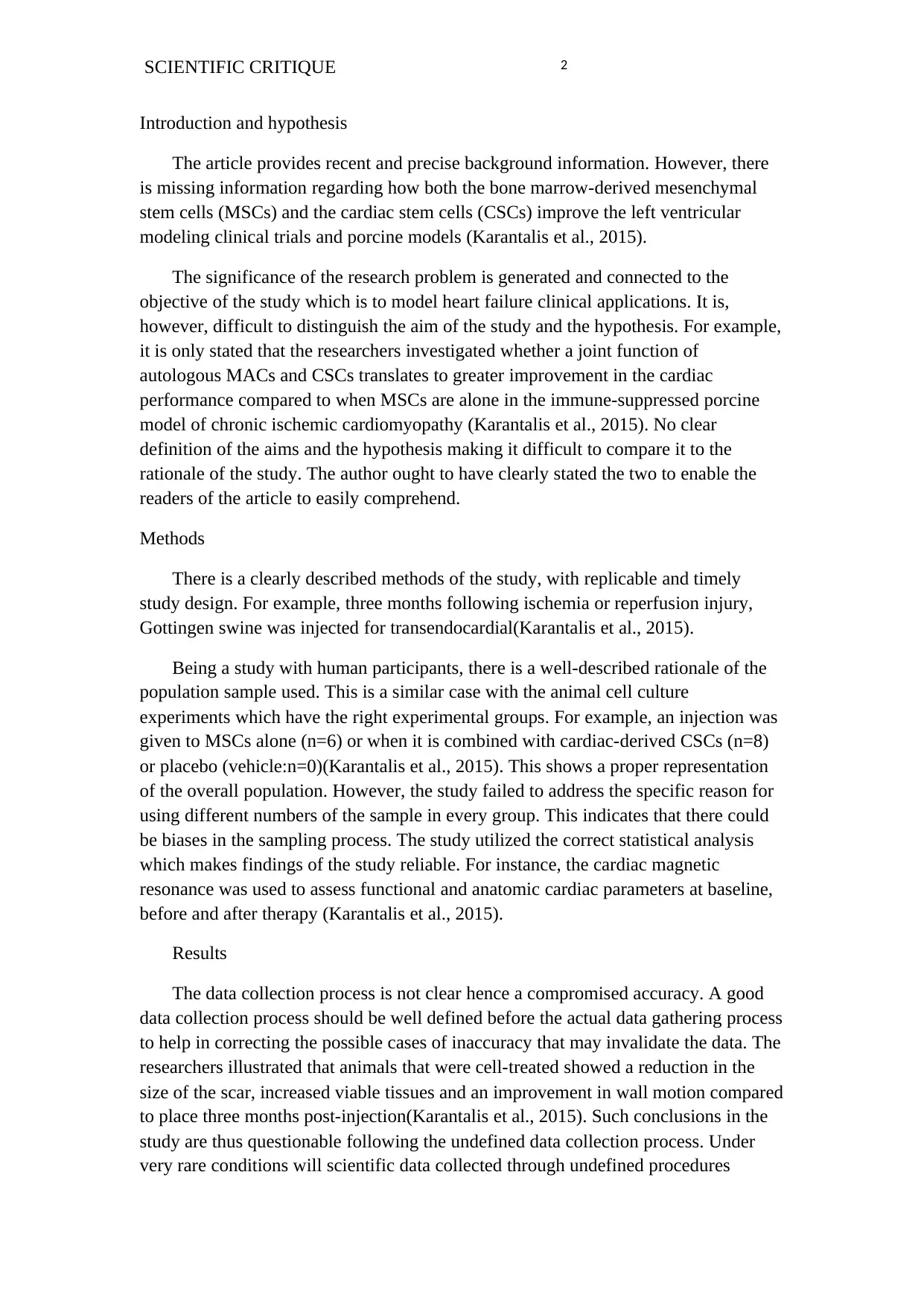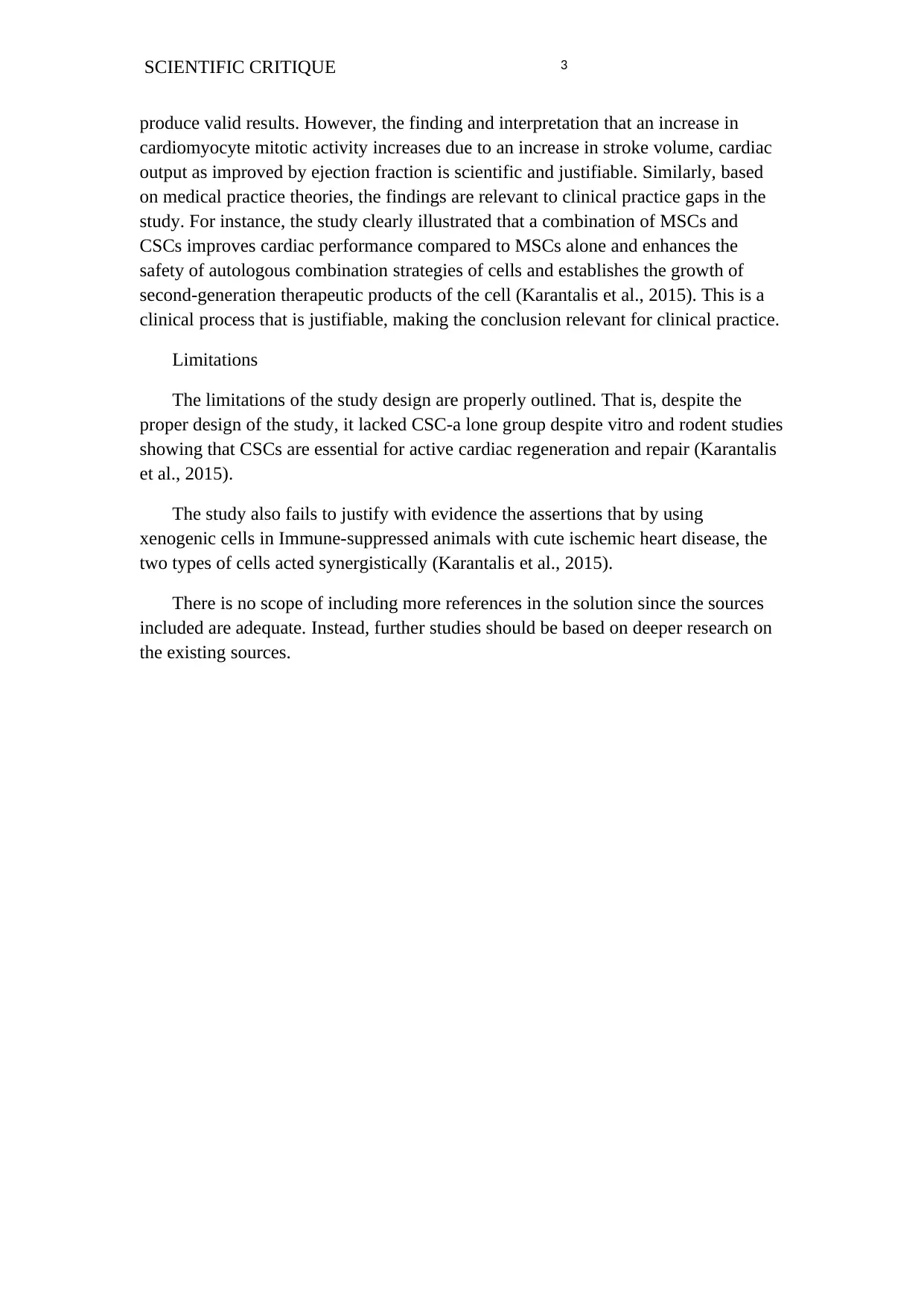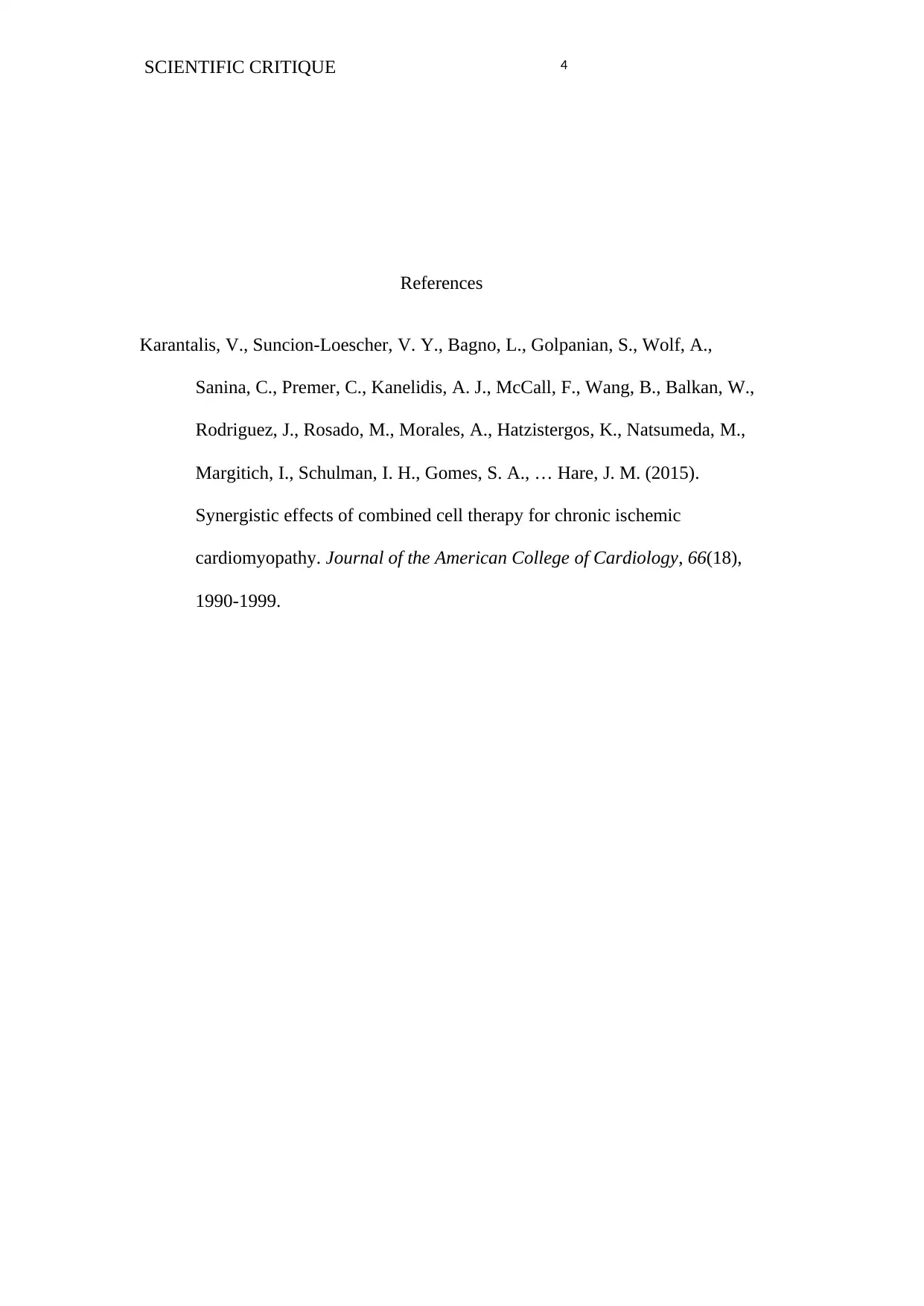BIOL2145 Cardiorespiratory Biology: Scientific Critique Report
VerifiedAdded on 2022/09/22
|4
|899
|21
Report
AI Summary
This report provides a scientific critique of the journal article "Synergistic Effects of Combined Cell Therapy for Chronic Ischemic Cardiomyopathy" by Karantalis et al. The critique begins with an assessment of the introduction and hypothesis, noting the clarity of the aim and the presence of necessary background information. The methods section is evaluated for replicability, rationale, and suitability of the study design. The report also examines the limitations of the study design, including the absence of a CSC-alone group and the lack of justification for the synergistic effects of xenogenic cells. The results section is scrutinized for data collection accuracy and the validity of the conclusions drawn, particularly regarding the increase in cardiomyocyte mitotic activity and its impact on cardiac performance. The report highlights the relevance of the findings to clinical practice and identifies areas for further research based on the existing sources.
1 out of 4







![[object Object]](/_next/static/media/star-bottom.7253800d.svg)